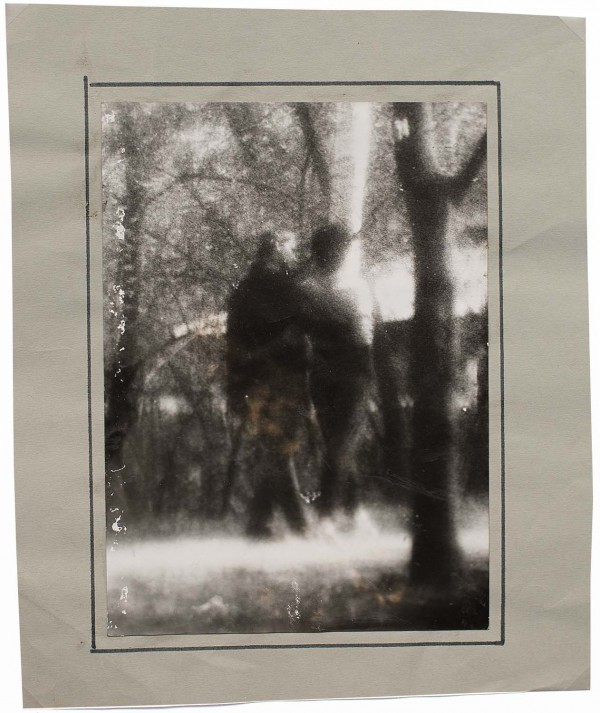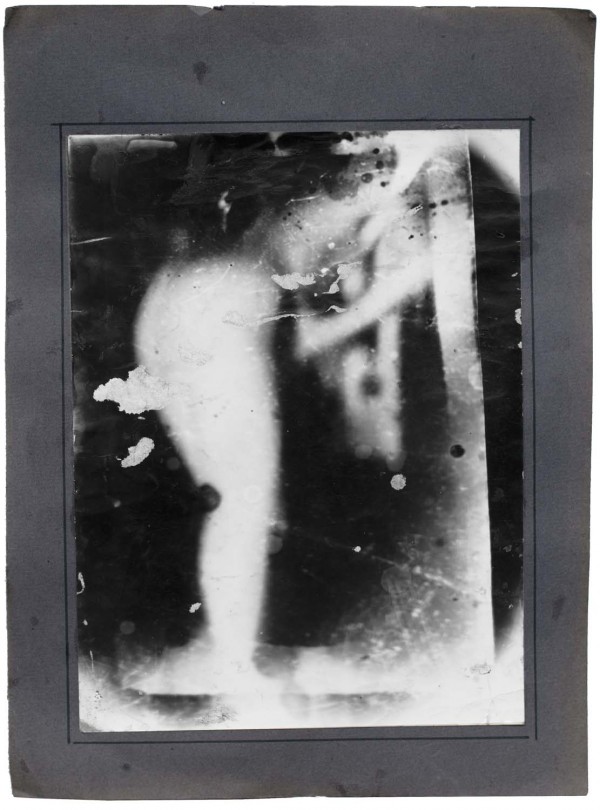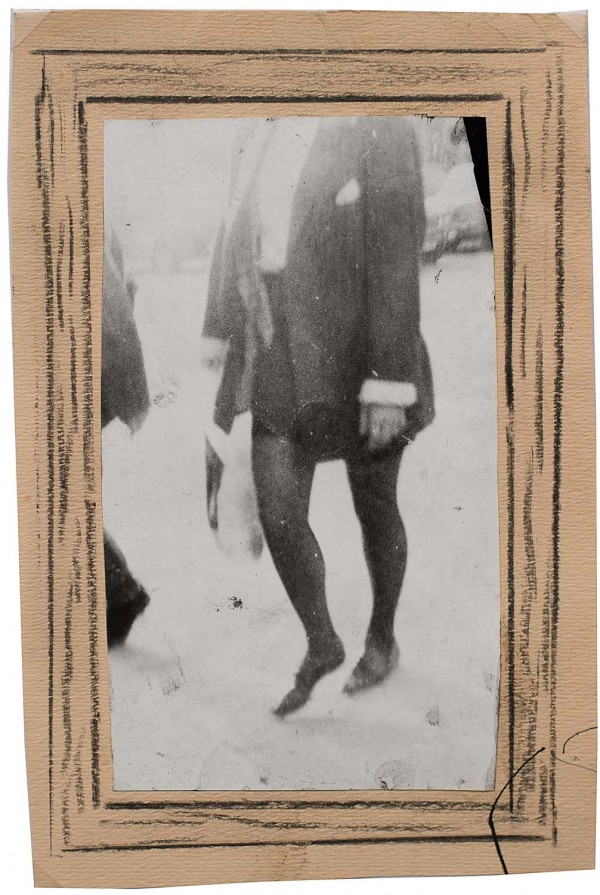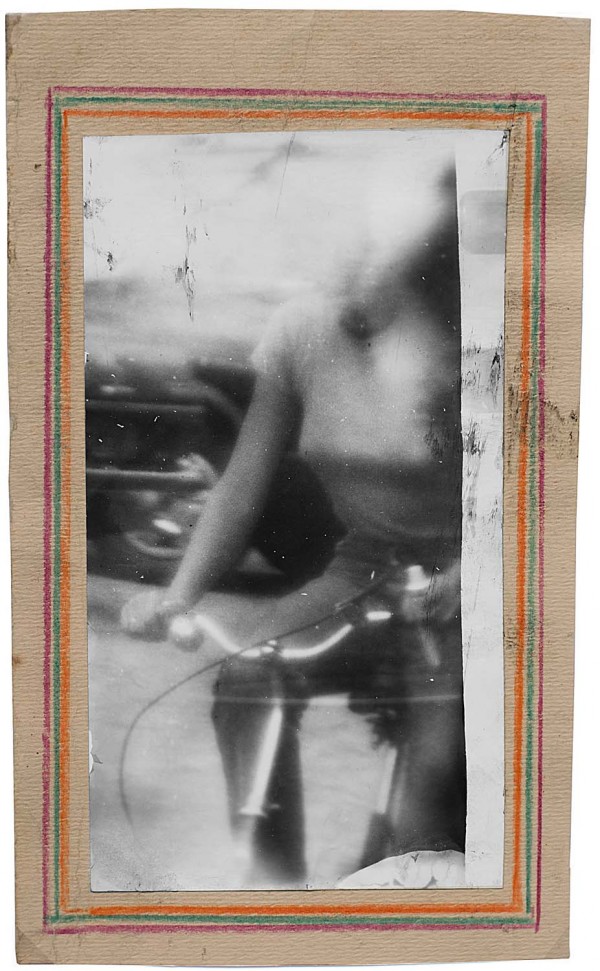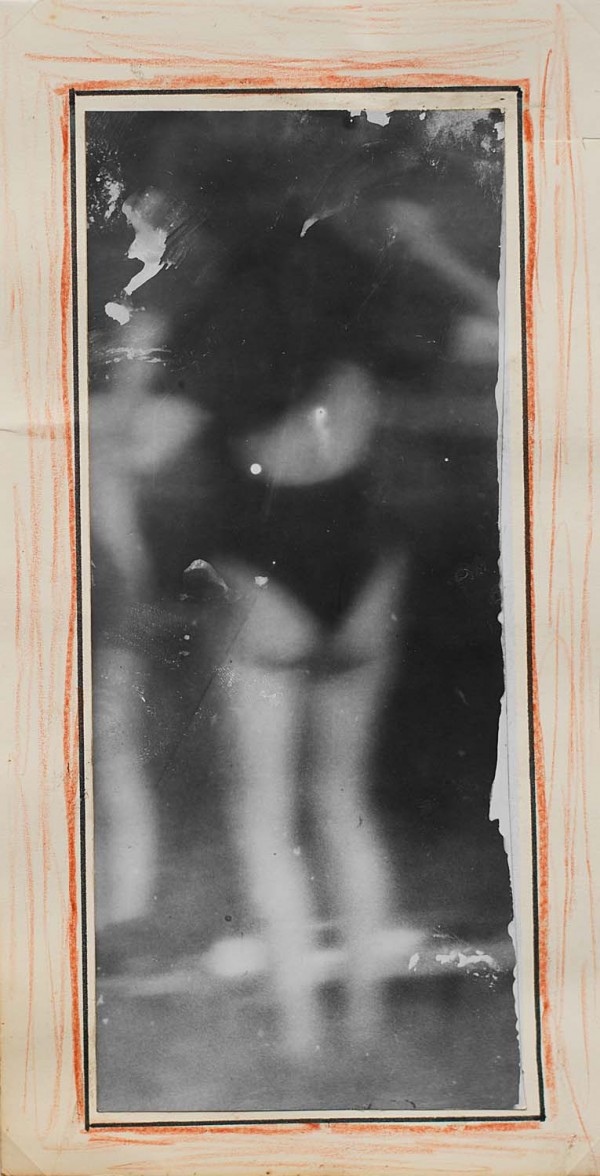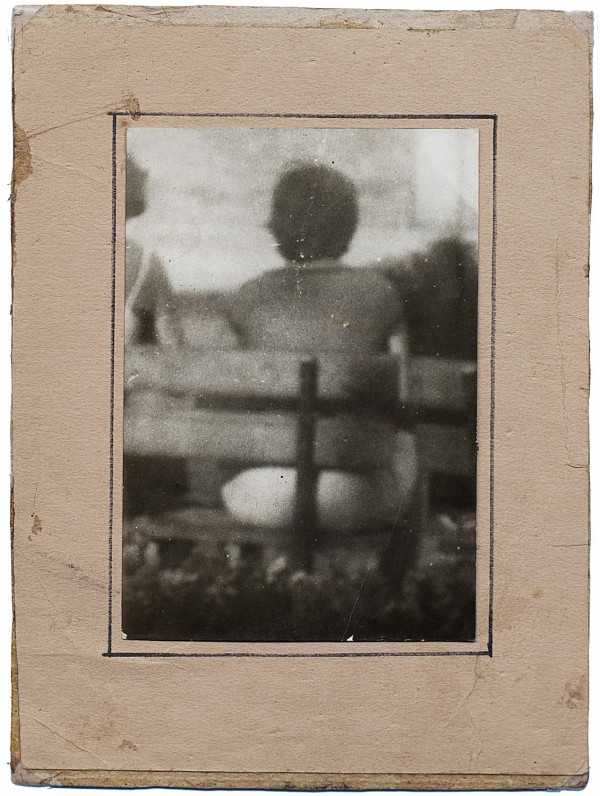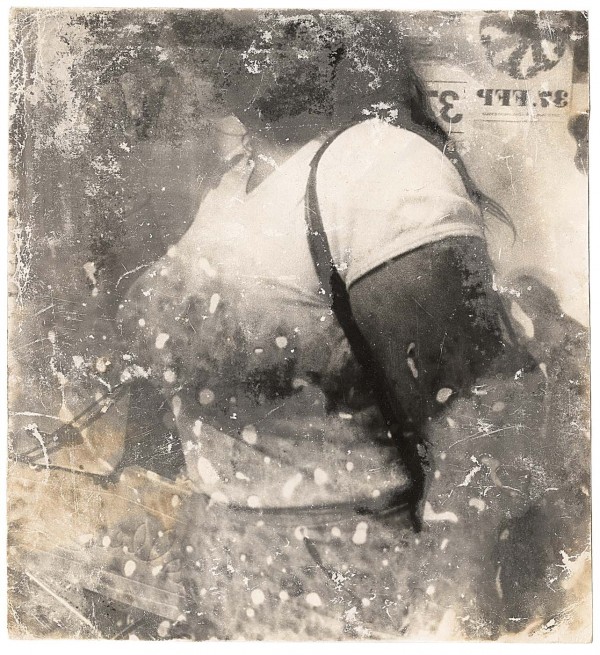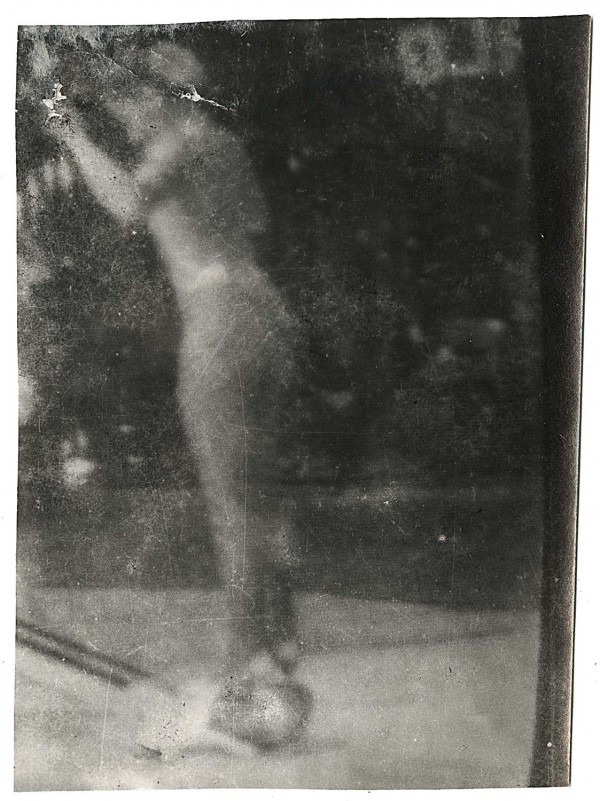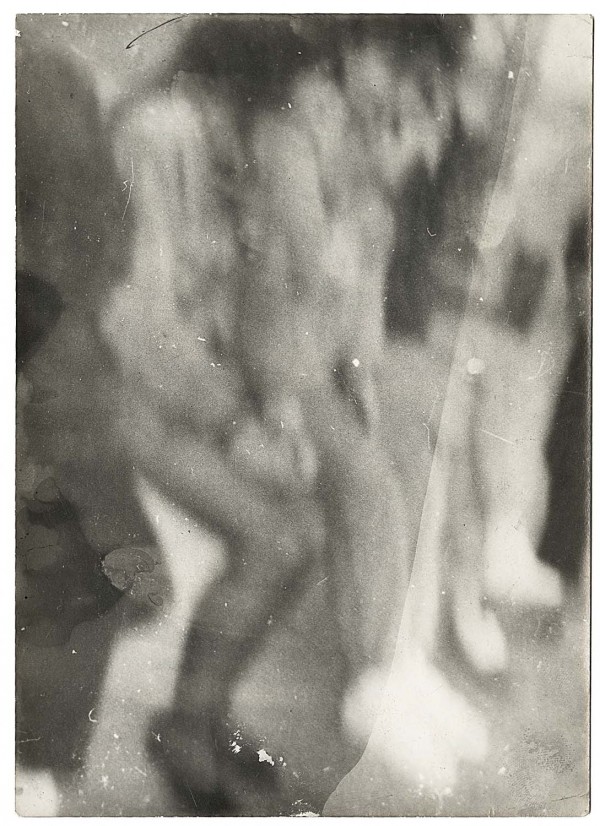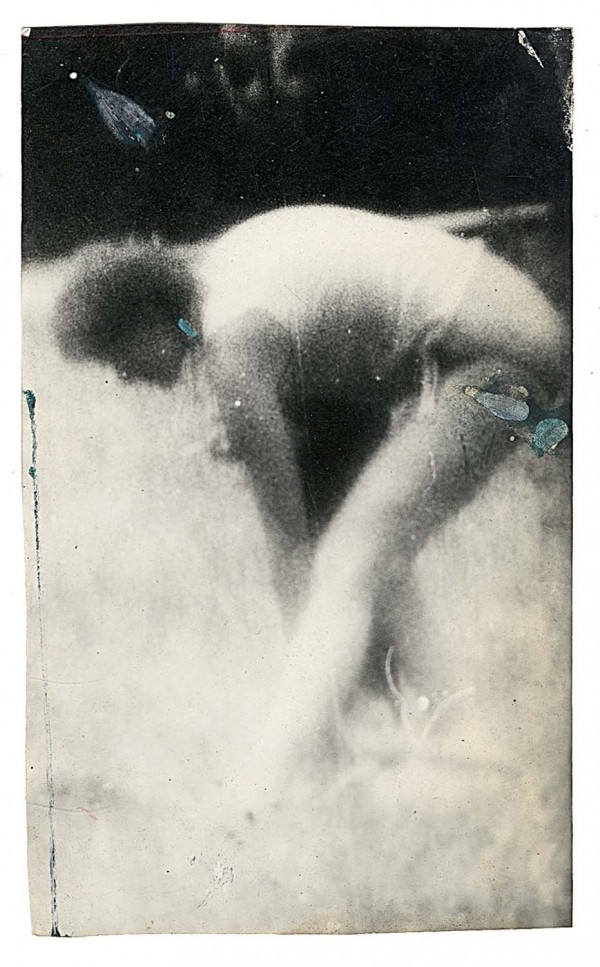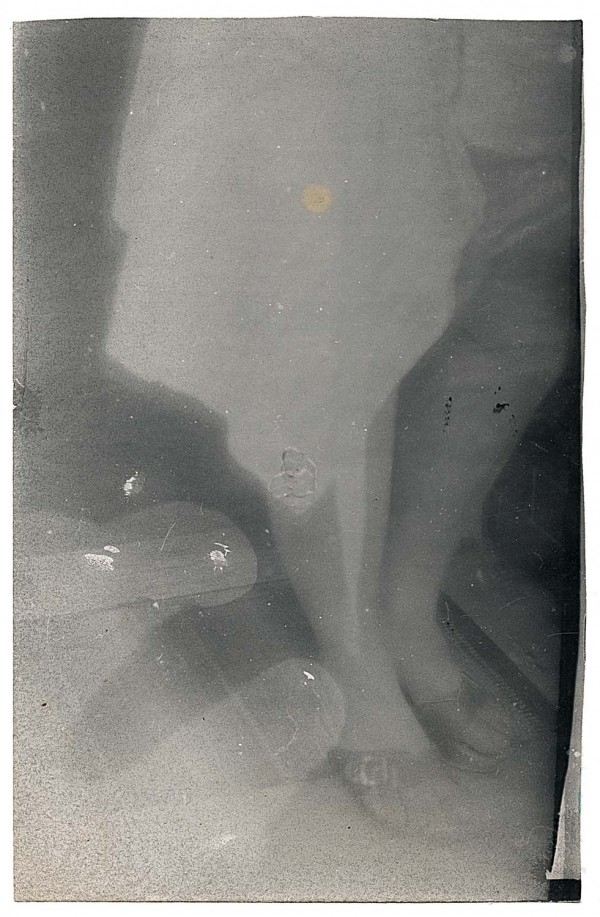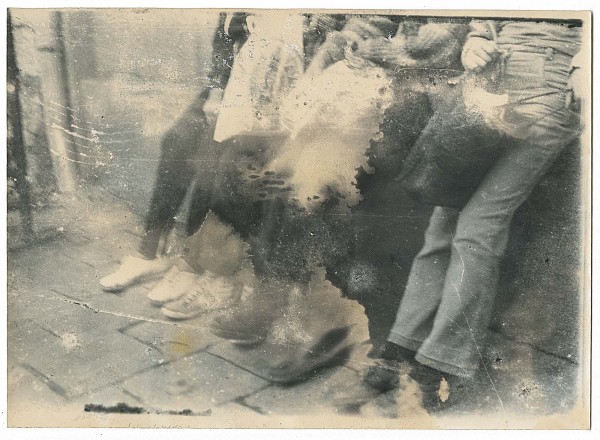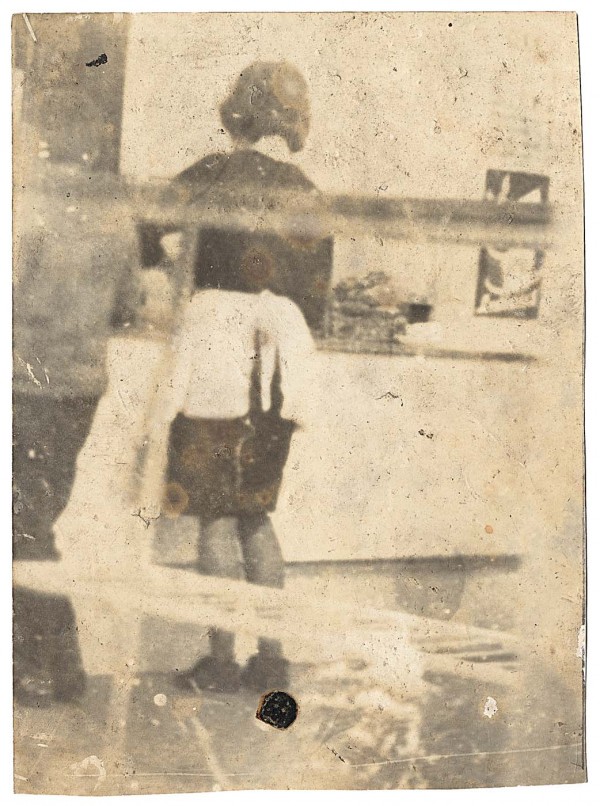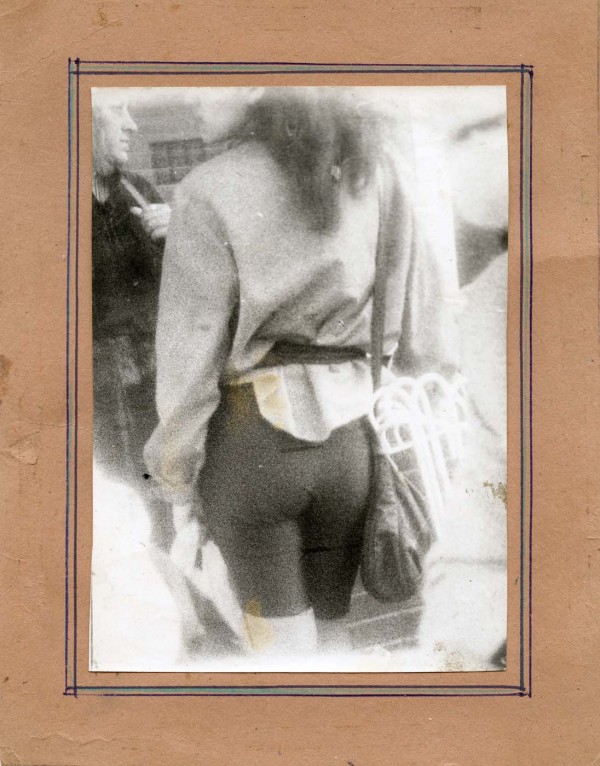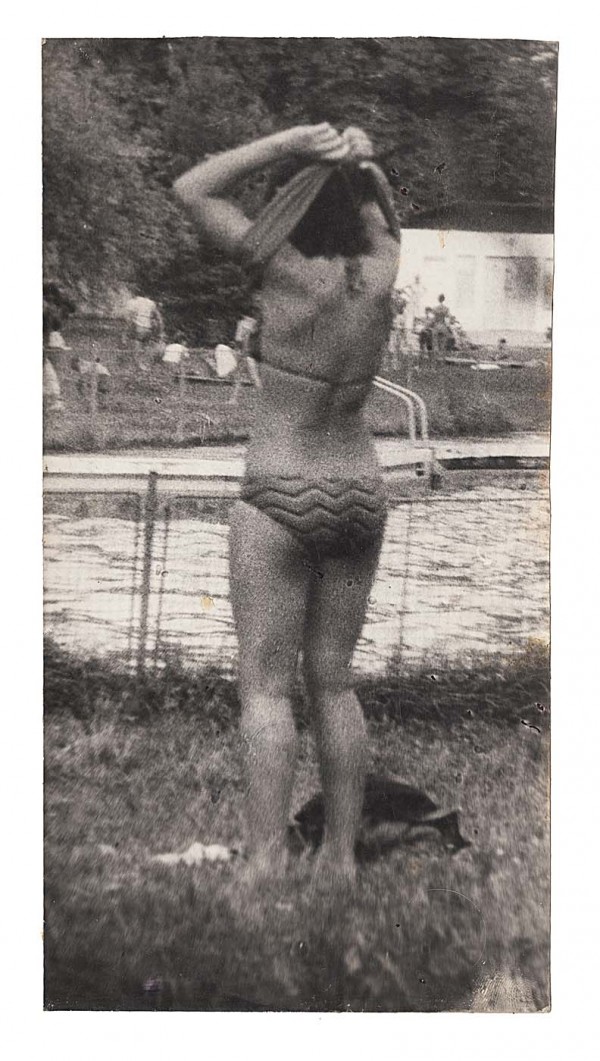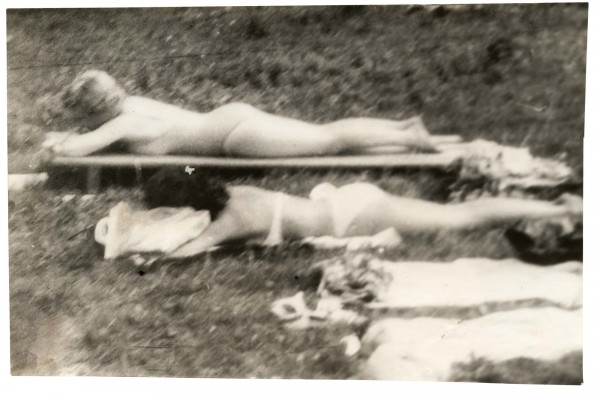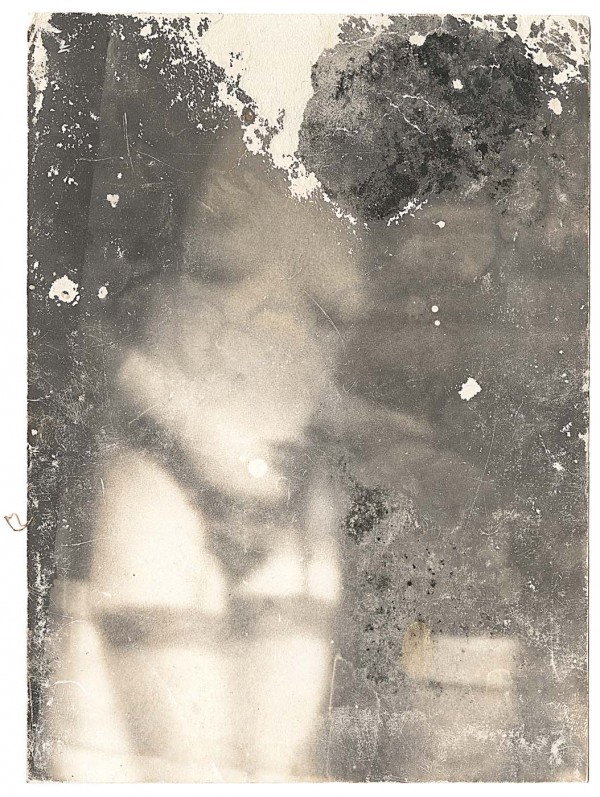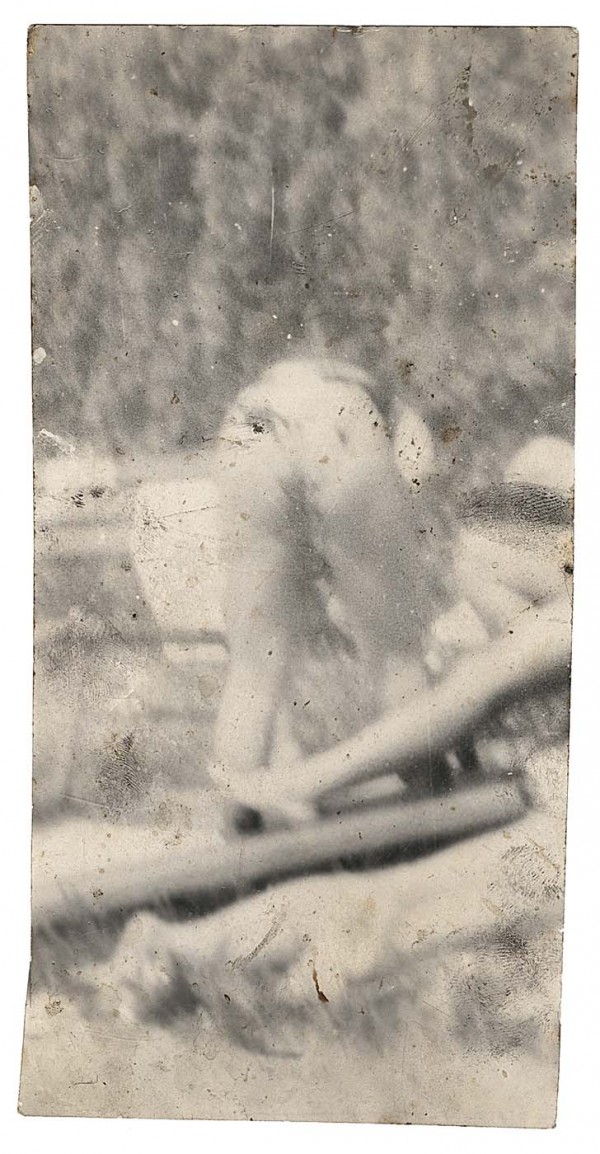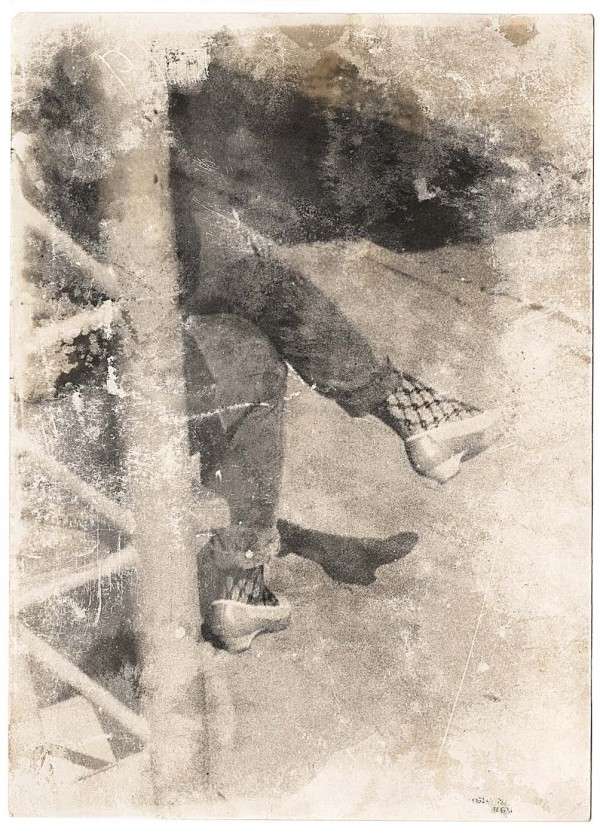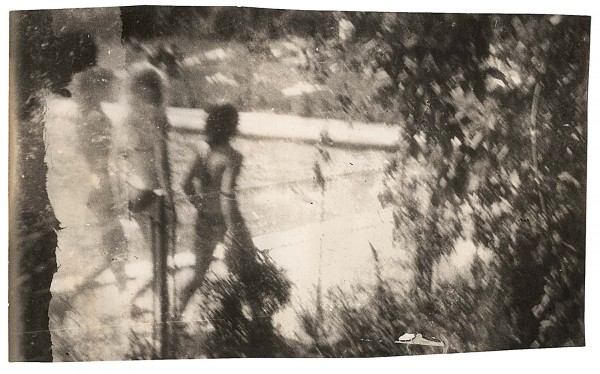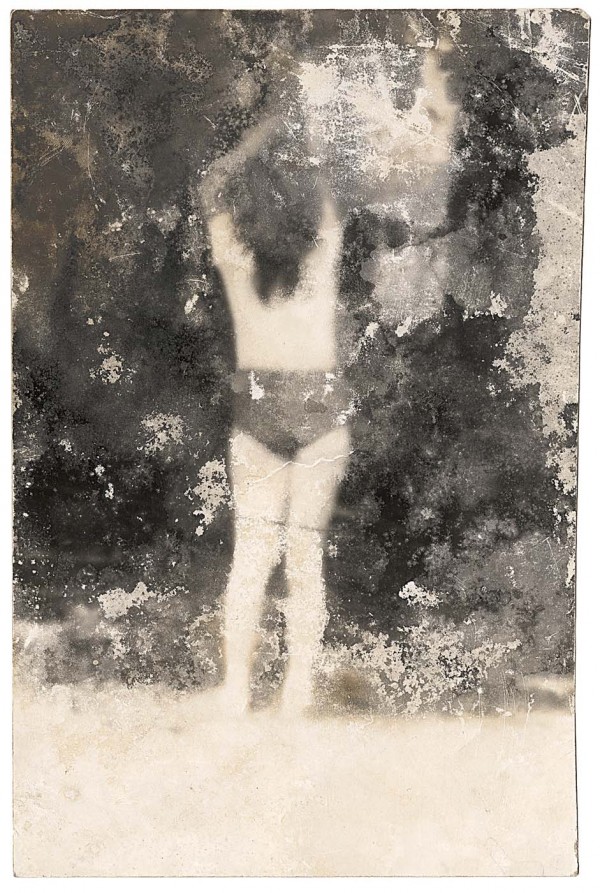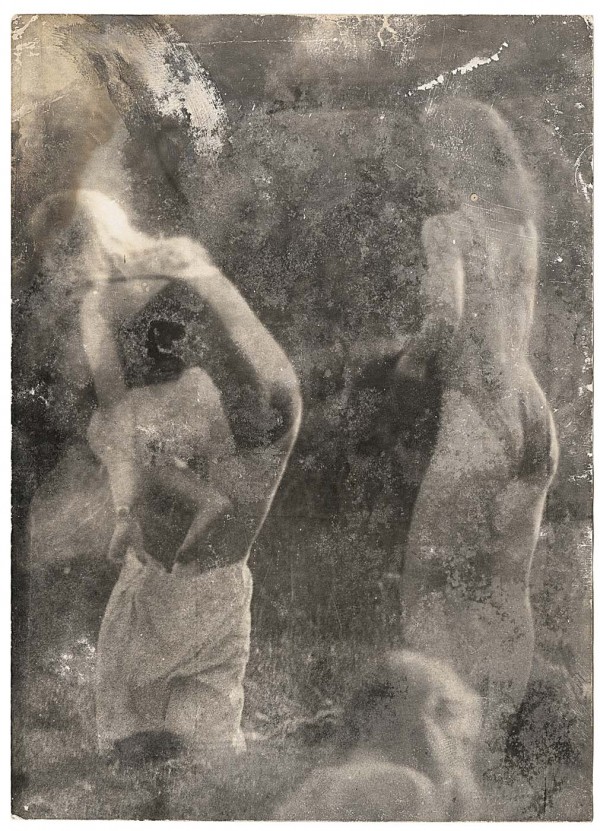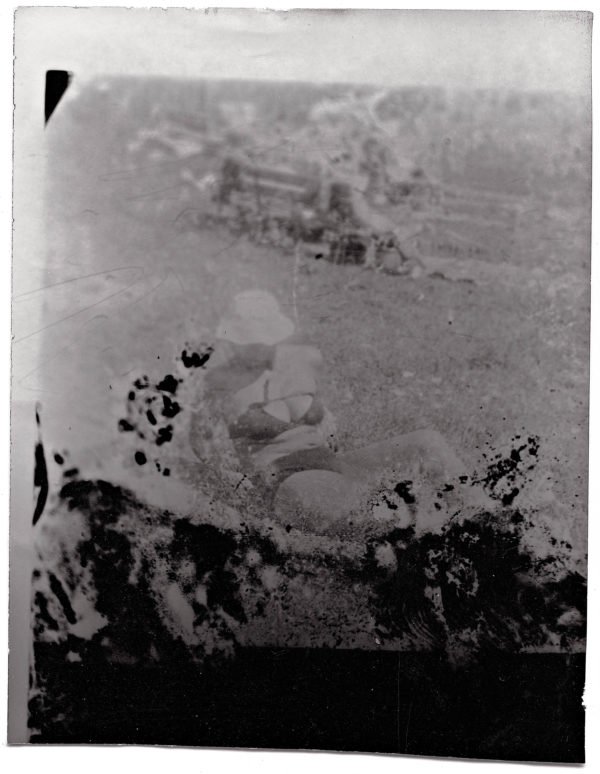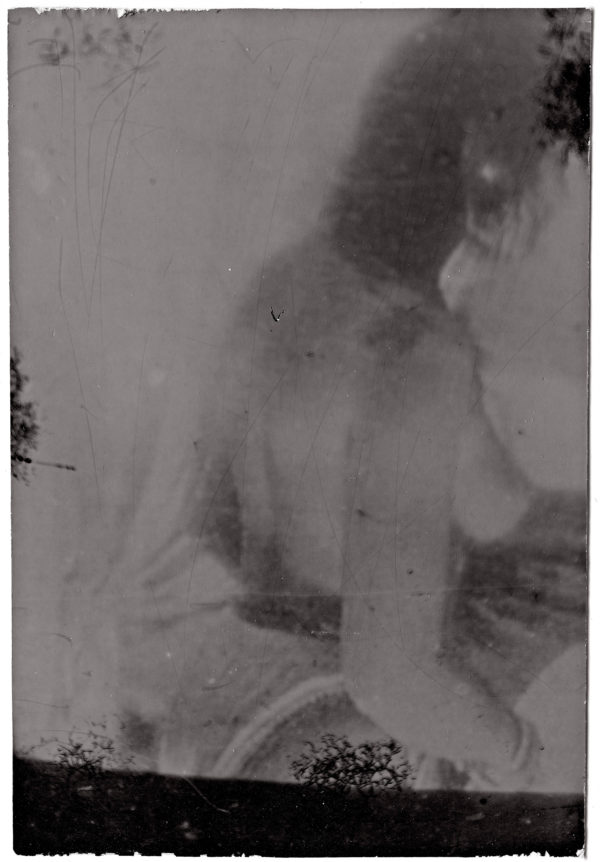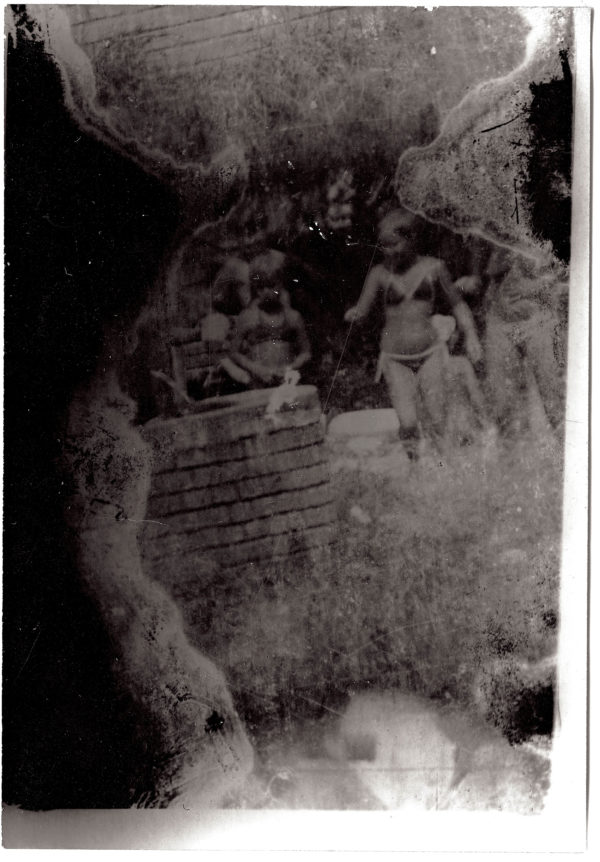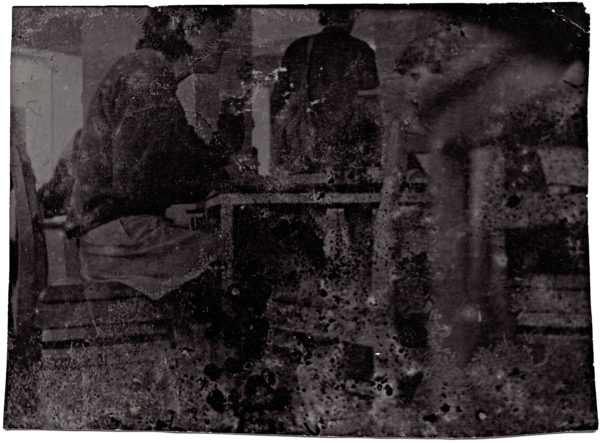Miroslav Tichý dropped out of the Fine Arts Academy of Prague in 1948. In the 1970s, the rather conventional cubism-influenced painter forsook painting for photography, which he saw as a “new world.” He built his own cameras and, to save money, used 60 mm film cut in half. He made his
pictures—mainly of women whom he saw on city streets, in the park, or behind the fence of the
municipal swimming pool— by pulling his camera from under his pullover at the opportune moment. He never looked through the viewfinder, as he said he was capable of “catching a swallow in full
flight” with his method. His pictures show women standing, sitting on a bench, lying down, in candid poses, as well as bodies with the head cut off, people from the back, and so on. Tichý set himself a daily quota of images. Printing just a small number of his images (with an enlarger that he had also made), sometimes improving them with a pencil stroke, occasionally framing them, he then left the prints on the floor of his home without showing them to anyone. Not inclined to follow social norms, which he regarded as stifling, Tichý began to live on the street. His apartment, which was overrun with photographs, became his worldly dump. His work was discovered by Roman Buxbaum in the late 1990s and received its first international recognition through Harald Szeemann, who presented it at the Sevilla Biennale in 2004. He received a major retrospective in 2008 at the Centre Georges-Pompidou. And yet, Miroslav Tichý, the rebel, did not want his works to be shown.
